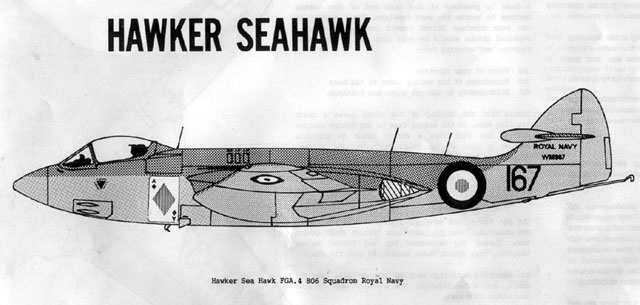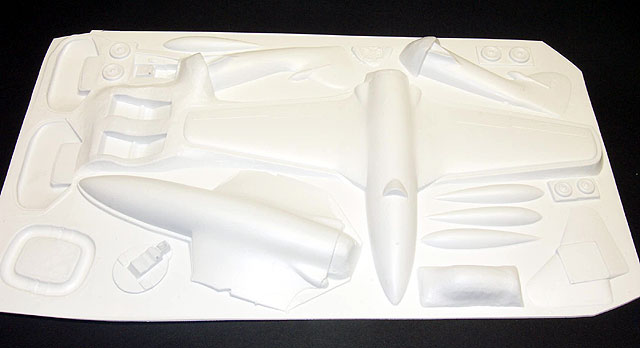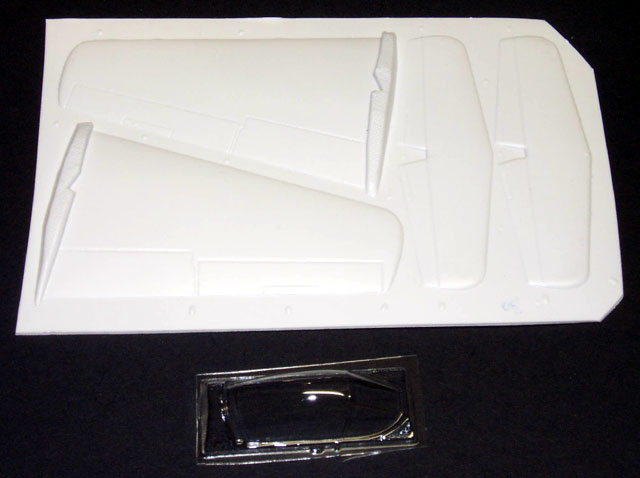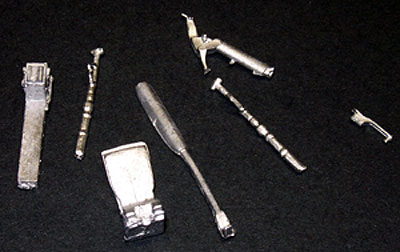Hawker Sea HawkFalcon
Reviewed by Brett Green
The 1960s and 1970s were boom decades for the hobby of plastic modelling. Revell, Airfix and Frog kept up a punishing schedule of releases. During the late 1960s and early 1970s, my pocket money did not stand a chance of keeping up with the newly bagged Series One Airfix kits that continued to appear on the shelves of my local newsagent. By contrast, the 1980s was a desolate decade for modellers. New releases slowed to a trickle. After-market accessories were fairly primitive and very limited in supply. Some vacform models were available, but most of the products of the era were little more than suggestions of the general shape of an aircraft, leaving a massive amount of scratchbuilding and detailing to the modeller. Falcon Industries of New Zealand entered this modelling landscape in the 1980s. At the time, their vacform kits and conversions were revolutionary. Even now, most of their later releases still stand up to close scrutiny. There is little doubt that Falcon paved the way for the later remarkable vacform kits from companies such as Dynavector and Cooper Details. Falcon themselves still operate today, producing sparkling replacement vacform canopies under a number of different brand names including Squadron.
I was intrigued to recently receive Falcon's 1/48 scale Hawker Seahawk as a review sample. The kit comprises two sheets of thick white vacform styrene with 30 parts on the plastic; a crystal clear vacform canopy and a spare; plus seven white metal parts. The styrene parts must be cut from the backing sheet and prepared before assembly. Modellers not familiar with the techniques associated with vacform modelling might care to check my article "Building Vacform Models Part One - The Basics" in HyperScale's Reference Library.
The vacform parts include the wings, fuselage, intake ducting, jet pipes, pre-shaped main undercarriage bays, cockpit tub, rear bulkhead, drop tanks and wheels. The plastic has a luxurious, satin texture and recessed panel detail which is quite fine and consistent. It looks a little soft on the unpainted white plastic, but will look much better under a coat of paint.
Engineering of the parts has been well thought out. The forward upper fuselage has been formed with the whole upper wings. This will ensure the correct dihedral. It also simplifies the installation of the exhaust ducting and jet pipes. The lower forward fuselage is integrated with the centre wing section. Outer wing panels are split at the lower wingfold line. The rear fuselage is more conventionally split vertically.
Instructions comprise an A3 sheet with 1/48 scale plans plus text tips for construction. The Seahawk kit also includes a supplementary A4 sheet of reference pictures and information. No decals are supplied, but the plans do include two marking suggestions. It should also be pointed out that, although all the major parts are supplied, the modeller will be required to undertake some additional research and add some scratchbuilt detail, expecially in the wheel wells and the cockpit. In addition, the modeller must be prepared to spend extra time cutting out, cleaning up and dry-fitting the vacform parts before assembly.
Is there a place for vacform kits in the 21st Century? In my opinion, there certainly is. We are not likely to see a Hawker Sea Hawk or a Supermarine Attacker as a mass-produced, injection moulded kit, so Falcon's 1980s vacform kits are still a godsend to post-war FAA fanciers. Do Falcon's vacform kits meet the standard for 21st Century modellers? Falcon's vacform kits will supply the basic components to create an accurate model as long as you have some experience with vacform kits; don't mind putting in some extra time for preparation, scratchbuilding and test-fitting; and can source your own references and decals. The Seahawk kit in particular looks like a really interesting and potentially satisfying project. Recommended. Thanks to Rex Barker for the review samples Visit Falcon's website by following this link Review Text and Images Copyright © 2002 by
Brett Green
|



 White metal parts are supplied for the undercarriage legs, the
basic seat and ejection rail.
White metal parts are supplied for the undercarriage legs, the
basic seat and ejection rail.